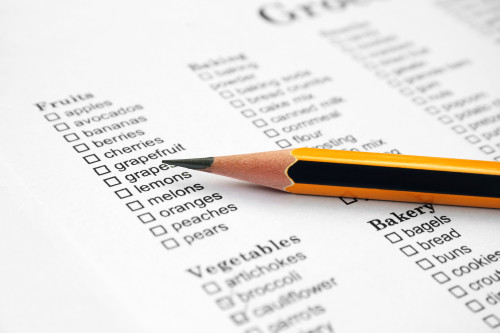Managing your diet

By way of a reminder, the food list – or even any other food lists you will come across via different resources such as the internet – are ONLY to be viewed as a form of guidance, and not as authorities in themselves. This is because many HIT sufferers have to cope with multiple intolerances, such that commencing an elimination diet without a diagnosis by a doctor and consultation with a dietician is not advisable.
If you abide by this guidance, you should be able to notice a positive change after about 4 weeks of the elimination diet.
HIT sufferers have different thresholds, i.e. tolerance levels, so the next step after completing a successful elimination diet is to establish your threshold level, with the aim of gradually improving it over a period of time.
If you have ticked all the boxes up to this point, then we suppose it is safe to wish you the best towards a better quality of life.
- A food diary is essential!
It is important to eat foods that are low in histamine levels in accordance to your threshold. Please always remember that there is no such thing as an “histamine-free diet”!
Here are some general pointers:
- Avoid or reduce eating canned foods and ready meals
- Avoid or reduce eating ripened and fermented foods (older cheeses, alcoholic drinks, products containing yeast, stale fish)
- Histamine levels in foods vary, depending on how ripe, matured or hygienic the foods are
- As much as it is possible, only buy and eat fresh products
- Don’t allow foods to linger outside the refrigerator – especially meat products
- Ensure that your food preparation area (kitchen) is always kept clean – but don’t be manic!
- Everyone has their own threshold; you will need to find yours
- Consult a certified dietician about working out a balanced diet
- Learn to cook! It can be loads of fun once you get into it
Foods that have been reported to have lower histamine levels and are thus to be preferred:
- Fresh meat (cooled, frozen or fresh)
- Certain fresh/frozen fish – hake, trout, plaice
- Chicken (cooled, frozen or fresh)
- Egg
- Fresh fruits – with the exception of plantains, most fresh fruits are considered to have a low histamine level (also see histamine liberators below)
- Fresh vegetables – with the exception of tomatoes, eggplant and spinach
- Grains – also products thereof such as rice noodles, white bread, rye bread, rice crisp bread, oats, puffed rice crackers, millet flour, pasta
- Fresh pasteurised milk and milk products
- Milk substitutes – goat milk, sheep milk
- Cream cheese, mozzarella, butter, (without the histamine generating rancidity)
- Most cooking oils – check suitability before use
- Most leafy herbs – check suitability before use
- Most fruit juices without citrus fruits
- Herbal teas – with the exception of those listed below
Foods that have been reported to have higher levels of histamine:
- Alcohol
- Eggplant
- Pickled or canned foods – sauerkrauts
- Matured cheeses
- Smoked meat products – salami, ham, sausages….
- Shellfish
- Beans and pulses – chickpeas, soy flour
- Long-stored nuts – e.g peanuts, cashew nuts, almonds, pistachio
- Chocolates and other cocoa based products
- Seitan
- Rice vinegar
- Ready meals
- Salty snacks, sweets with preservatives and artificial colourings
Foods that have been reported to have released histamine (histamine releasers):
- Most citrus fruits – lemon, lime, oranges…
- Cocoa and chocolate
- Walnuts, peanuts
- Papaya, pineapples, plums, kiwi and bananas
- Legumes
- Tomatoes
- Wheat germ
- Most vinegars
- Additives – benzoate, sulphites, nitrites, glutamate, food dyes
Foods that have been reported to block the diamine oxidase (DAO) enzyme:
- Alcohol
- Black tea
- Energy drinks
- Mate tea
Debatable:
- Yoghurt – depends on the bacteria culture used
- Egg white – The theory, that egg white is a histamine releaser has been dismissed.
Other:
- Yeast – even though it does not contain histamine as such, yeast serves as a catalyst for minor or major histamine generation during leavening depending on product. There is no yeast in the end product. Relevance of yeast for HIT-patients is under discussion.
- Yeast extract has been reported to be very high in biogenic amines and a DAO inhibitor and is therefore deemed not suitable in the low-histamine diet.
An elimination diet takes around 4 weeks. By then you should feel a lot better. Then it is time to figure out your personal threshold.
Sources include:
Food Intolerances, Histamine, FODMAPs & IBS Guide; online app by BALIZA
nmi-Portal, (english Version: Food Intolerance Network)
Maintz L, Novak N: Histamine and histamine intolerance, American Journal of Clinical Nutrition 2007
Jarisch, R. “Histaminunverträglichkeit”, Thieme Verlag, 2nd Edition

